Do you have a question about the Chevrolet Malibu 2003 and is the answer not in the manual?
Covers manual and power seat adjustments, and reclining seatbacks for front seats.
Details on adjusting head restraints for proper positioning to reduce neck injury.
Instructions on rear seat operation, including folding the seatback.
Explains the importance of safety belts for everyone and proper usage.
Guidance on safety belt usage for older children and infants.
Information about the vehicle's air bag system, its function, and safety precautions.
Procedures for checking the proper function of safety belts and air bag systems.
Information on vehicle keys, including bar-coded key tags and making extra keys.
Details on the operation and functions of the remote keyless entry system.
Explains various ways to lock and unlock vehicle doors and related safety precautions.
Information on power door lock switches, delayed locking, and door ajar reminders.
Details on customizing automatic door locking modes for enhanced security.
How to use rear door security locks to prevent passenger opening from inside.
Features to prevent accidental locking of keys inside the vehicle.
Instructions on opening the trunk and safety precautions for trunk lid operation.
Information on manual and power windows, including express-down and lockout features.
Details on adjusting sun visors and the lighted vanity mirror.
Overview of vehicle theft-deterrent features to protect against vehicle theft.
Guidance on new vehicle break-in procedures for optimal performance.
Explanation of the different ignition switch positions and their functions.
Information on the feature allowing accessories to remain active after ignition is off.
Steps and safety tips for starting the vehicle's engine.
Details on using the engine coolant heater for cold weather starting and fuel economy.
Explanation of the automatic transaxle shift lever positions and safe operation.
How to use the second-gear start feature for improved traction on slippery surfaces.
Instructions on how to set and release the parking brake and related warnings.
Procedure for safely shifting the vehicle into PARK, including safety precautions.
Safety guidelines and procedures for leaving the vehicle with the engine running.
Explanation of torque lock and how to prevent or resolve it when parking on hills.
Troubleshooting steps if the shift lever cannot be moved out of PARK.
Safety warning about parking over flammable materials due to hot exhaust parts.
Critical safety information regarding carbon monoxide (CO) from engine exhaust.
Safety advice and precautions when running the engine while the vehicle is parked.
Details on adjusting manual rearview and outside remote control mirrors.
How to operate and adjust the vehicle's outside power mirrors.
Information about the passenger side convex mirror and its potential effects on perception.
Location and usage of storage compartments like the glove box and center console.
Instructions for operating the sunroof, including vent and express-open positions.
Diagram and identification of main instrument panel components and controls.
How to use hazard warning flashers to alert other drivers or signal a problem.
Suggestions for using reflective triangles as additional warning devices.
How to sound the vehicle's horn using the steering wheel symbol.
Instructions on adjusting the steering wheel to a comfortable position.
Description of the lever's functions including turn signals and headlamp controls.
Operation of exterior lamps, including parking lamps, headlamps, and automatic system.
Information on the function and operation of daytime running lamps for visibility.
How the automatic headlamp system operates based on ambient light conditions.
Feature allowing headlamps to be turned off while in Park under dark conditions.
Description of the feature that keeps headlamps illuminated for a short period after engine shutoff.
Operation of fog lamps, including turning them on/off and automatic shutoff with high beams.
Details on interior lighting, including instrument panel brightness and entry/exit lighting.
System feature to prevent battery drain from interior lamps left on.
Information on using accessory power outlets and their load limitations.
Location and usage of ashtrays, cigarette lighter, and safety precautions.
Operation of the climate control system for heating, cooling, and ventilation.
Methods to clear fog and frost from windows using the climate control system.
Operation of the rear window defogger grid and its automatic shutoff feature.
How to adjust air outlets to direct airflow within the vehicle's cabin.
Explanation of vehicle warning lights and gages and their significance.
Overview of the instrument panel cluster, including warning lights and gages.
Information on the speedometer, odometer, and trip odometer functions.
Explanation of the tachometer and warnings about operating in the red zone.
Details on the safety belt reminder light and chime system.
Explanation of the air bag readiness light and what it indicates about system function.
Information about the charging system light and potential issues with the electrical system.
Explanation of the brake system warning light and its meaning for vehicle safety.
Information on the ABS warning light and when vehicle service is required.
How to read the engine coolant temperature gage and what to do if the engine overheats.
What the low coolant warning light indicates and when to check coolant levels.
Explanation of the check engine light, its causes, and potential issues.
Information on emissions inspections and how to ensure the vehicle passes.
Understanding the oil pressure light and the importance of immediate engine oil checks.
Information on the check oil level light and how to properly check engine oil.
Explanation of the Passlock warning light and what it signifies for the theft-deterrent system.
What the low washer fluid warning light indicates and when to refill the reservoir.
How the door ajar light indicates if doors are not properly closed or latched.
Meaning of the service vehicle soon light and when to consult the dealer.
How to read the fuel gage and what the low fuel warning light and chime signify.
Overview of the vehicle's audio system, including radio and CD player operations.
Instructions for setting the time on radios without RDS functionality.
How to set the time using RDS broadcast information for radios with RDS.
Operation of the base level radio with CD player, including radio and volume controls.
Methods for finding radio stations using seek and scan functions.
How to set and recall favorite radio stations using the numbered pushbuttons.
Adjusting audio tone controls for bass and treble, including automatic settings.
How to adjust speaker balance and fade for optimal sound distribution.
Features of the Radio Data System (RDS) for station seeking and information display.
Steps to select and find stations based on program type (PTY).
Explanation of RDS messages like ALERT!, INFO, and TRAF.
Information on radio messages such as CAL ERR (Calibration Error).
Instructions for playing cassette tapes, including tape insertion and control usage.
Troubleshooting common cassette tape player error messages.
How to use a portable CD player adapter kit with the cassette tape player.
Instructions for inserting and playing compact discs, including error messages.
Troubleshooting common compact disc player error messages and reasons for disc ejection.
How the THEFTLOCK system deters radio theft for non-RDS radios.
How the THEFTLOCK system deters radio theft for RDS radios.
Information on AM and FM radio reception and factors affecting signal quality.
Guidelines for maintaining the cassette tape player for optimal performance and longevity.
Proper handling and storage of CDs to prevent damage.
Recommendations for cleaning and maintaining the CD player's lens.
Information on the fixed mast antenna, including maintenance and straightening.
How to adjust the volume level of vehicle chimes through the audio system.
General advice on driving safely, emphasizing defensive driving techniques.
Key principles of defensive driving, including anticipating others and maintaining space.
Critical information on the dangers of driving under the influence of alcohol.
Explanation of the three systems controlling vehicle movement: brakes, steering, and accelerator.
Understanding perception time, reaction time, and stopping distances for safe braking.
How ABS works to prevent braking skids and its warning light indication.
Proper technique for using anti-lock brakes, emphasizing not pumping the pedal.
Emergency braking techniques, including steering and 'squeeze' braking without ABS.
Information on power steering and how steering is affected when the engine is off.
Advice on safely navigating curves, including speed adjustment and proper technique.
Techniques for evasive steering maneuvers in emergency situations.
Steps for recovering the vehicle if wheels drop off the road onto the shoulder.
Tips and safety precautions for safely passing other vehicles on the road.
Understanding different types of skids and how to handle them, including ABS usage.
Essential tips for safe driving during nighttime conditions.
Precautions and techniques for driving safely in rain and on wet road surfaces.
Explanation of hydroplaning and advice on how to avoid or manage it.
Safety advice for driving through deep puddles or standing water.
Critical warning about the dangers of driving through flowing or rushing water.
Tips for increasing safety when driving in city traffic conditions.
Guidance on freeway driving, including merging, lane usage, and exiting.
Checklist and advice for preparing the vehicle and oneself for long-distance travel.
Awareness and tips to prevent highway hypnosis and maintain alertness while driving.
Specific driving tips for navigating steep hills and mountain roads safely.
Essential tips and preparation advice for driving safely during winter conditions.
Techniques and precautions for driving safely on snow or ice-covered roads.
Steps to take if stranded in a blizzard, focusing on safety and summoning help.
Methods for freeing a stuck vehicle, with caution regarding wheel spin and transaxle strain.
General information about towing your vehicle or recreational vehicle towing.
Steps for towing the vehicle with all four wheels on the ground (dinghy towing).
Steps for towing the vehicle with a dolly and two wheels on the ground.
Information on vehicle weight capacity labels and proper weight distribution.
Essential safety tips and procedures for towing a trailer with your vehicle.
Guidance on trailer weight limits and factors affecting towing capacity.
Importance of trailer tongue weight and its effect on vehicle gross weight.
Ensuring proper tire inflation and not exceeding the vehicle's GVW limit.
Information on selecting the correct hitch equipment and installation precautions.
Proper attachment and usage of safety chains when towing a trailer.
Instructions for installing, adjusting, and maintaining trailer brakes.
Tips for handling and braking when driving with a trailer attached.
Techniques for backing up a trailer, including hand positioning and seeking guidance.
Advice on making wider turns and avoiding sudden maneuvers when trailering.
Ensuring trailer lamps function correctly and signal turns and stops to other drivers.
Precautions for driving on steep grades, including shifting and managing engine/transaxle temperatures.
Safety procedures for parking the vehicle with a trailer attached on a hill.
Steps for safely departing after parking a vehicle with a trailer on a hill.
Importance of more frequent maintenance for vehicles used for trailer towing.
Potential for engine cooling system to overheat during severe trailer towing conditions.
Information on dealer service, genuine GM parts, and doing your own service work.
Guidance on using recommended fuel, including octane, specifications, and additives.
Safety precautions and components located under the vehicle's hood.
How to check engine oil level, when to add oil, and what type of oil to use.
Information regarding engine oil additives and the recommended viscosity grade.
Guidance on when to change engine oil and filter based on driving conditions.
Instructions on inspecting and replacing the engine air cleaner filter.
Information on checking automatic transaxle fluid and when service might be needed.
Details on the cooling system, recommended coolant mixture, and capacity.
Guidance on the correct coolant mixture and safety precautions when adding coolant.
How to check the engine coolant level in the surge tank.
Procedure for adding coolant to the surge tank, including safety warnings.
Information on the coolant surge tank pressure cap and its proper installation.
What to do if the engine overheats, including steam warnings and safety procedures.
Overview of the cooling system, including fans and the coolant surge tank.
Specific procedure for adding coolant to the surge tank, with safety warnings.
When to check power steering fluid and what to do if a leak is suspected.
Steps for checking the power steering fluid level using the dipstick.
Information on windshield washer fluid, including what to use and how to add it.
Details on brake fluid type, reservoir location, and reasons for fluid level changes.
How to identify brake wear through warning sounds and the importance of servicing.
What brake pedal travel indicates about potential brake system issues.
How disc brakes adjust for wear and manual adjustment for drum brakes.
Importance of using correct GM replacement parts for brake system components.
Information on the vehicle's battery, including maintenance-free ACDelco and replacement.
Procedure for preparing the vehicle for storage to protect the battery.
Safe procedures and precautions for jump starting a vehicle with a dead battery.
General information on bulb replacement, including halogen bulbs and headlamp types.
Identification of headlamp components: front turn signal, high-beam, and low-beam.
Procedure for replacing bulbs in the front turn signal lamps.
Procedure for replacing the bulb in the center high-mounted stoplamp.
Procedure for accessing and replacing bulbs in taillamps, turn signals, stoplamps, and backup lamps.
Chart listing exterior lamp types and their corresponding bulb numbers.
Step-by-step instructions for replacing windshield wiper blade assemblies.
Information on vehicle tires, including quality grading and warranty details.
Importance of correct tire inflation pressure and the dangers of under/overinflation.
Recommended frequency for checking tire pressure and the compact spare tire.
Using a tire gage to accurately check tire pressure.
Guidelines for tire inspection, rotation patterns, and wheel alignment.
Indicators that signal when tires need to be replaced due to wear or damage.
Advice on selecting new tires, including TPC Spec numbers and avoiding mixed types.
Explanation of tire grading systems for treadwear, traction, and temperature performance.
Understanding the treadwear grade as a comparative rating of tire wear.
Explanation of tire traction grades and their ability to stop on wet pavement.
Understanding tire temperature grades related to heat resistance and dissipation.
Importance of wheel alignment and balance for tire life and vehicle performance.
When to replace wheels and the importance of using new GM original equipment parts.
Safety warning against using used wheels due to unknown history and potential failure.
Guidelines for legal and proper use of tire chains, including installation and speed limits.
What to expect and do when a tire experiences a blowout or slow leak.
Step-by-step instructions for safely changing a flat tire using the vehicle's jack.
Locating and removing the spare tire, jack, and other necessary tools from the trunk.
Steps for removing a flat tire and installing the spare tire, including wheel nuts.
Proper storage of a flat tire, jack, and tools to prevent injury during transit.
Instructions for storing the compact spare tire and associated tools securely.
Information on the compact spare tire's temporary use and regular inflation checks.
General advice on cleaning vehicle surfaces and avoiding hazardous cleaning products.
Tips for cleaning interior surfaces like fabric, carpet, vinyl, and leather.
Specific methods for removing various types of stains and odors from fabrics.
How to clean vinyl surfaces, including removal of tough stains like tar.
Proper methods for cleaning leather upholstery, avoiding damaging products.
Cleaning the instrument panel surface to avoid reflections and maintain visibility.
Using mild soap and water for cleaning interior plastic parts.
Proper methods for cleaning interior and exterior glass, avoiding scratches.
How to keep safety belts clean and dry, and warnings against bleaching or dyeing.
Lubricating weatherstrips with silicone grease to improve sealing and longevity.
Best practices for washing the vehicle to preserve paint finish and avoid damage.
How to clean exterior lamps and lenses using mild soap and water.
Occasional waxing or polishing to maintain paint finish and remove residue.
How to clean the windshield and wiper blades for clear visibility.
Proper methods for cleaning aluminum wheels, avoiding damaging cleaners.
Using tire cleaner and a stiff brush to clean tires.
Ensuring proper anti-corrosion application during sheet metal repair or replacement.
Importance of promptly repairing stone chips, fractures, or scratches to prevent corrosion.
Flushing underbody materials to prevent corrosion and rust development.
Understanding chemical fallout damage and GM's policy for new vehicle repair.
Information on GM-approved cleaning products available from the dealer.
Location and importance of the Vehicle Identification Number (VIN) and other labels.
Information on add-on electrical equipment, headlamp wiring, and power options.
How fuses and circuit breakers protect vehicle wiring and how to replace them.
Diagram and fuse/relay layout for the driver's side instrument panel fuse block.
Diagram and fuse/relay layout for the passenger's side instrument panel fuse block.
Layout of fuses and relays located in the engine compartment fuse block.
Approximate capacities for vehicle fluids and key engine specifications.
List of common maintenance parts and their corresponding part numbers.
Introduction to the maintenance schedule, emphasizing oil and fluid checks.
How proper maintenance contributes to vehicle condition and environmental protection.
Overview of necessary maintenance intervals, checks, and inspections for vehicle upkeep.
Explanation of the five parts of the maintenance schedule section.
Details scheduled maintenance services to be performed at specified mileage intervals.
How to use the maintenance schedule based on individual driving habits and conditions.
Guidance on choosing between short trip/city and long trip/highway maintenance schedules.
Conditions that define when the short trip/city maintenance schedule should be followed.
Specific maintenance intervals for short trip/city driving conditions.
Conditions defining when the long trip/highway maintenance schedule is appropriate.
Specific maintenance intervals for long trip/highway driving conditions.
Detailed maintenance services for short trip/city driving up to 100,000 miles.
Detailed maintenance services for long trip/highway driving up to 100,000 miles.
Owner checks and services to be performed at specified intervals for safety and performance.
Underhood checks recommended at each fuel fill, including oil and coolant levels.
Monthly checks including tire inflation and cassette tape player cleaning.
Semi-annual checks including restraint systems, wiper blades, and weatherstrip lubrication.
Annual checks including key lock cylinders service and body lubrication.
Procedure to check the starter switch operation and ensure safety.
How to check the automatic transaxle shift lock control system for proper function.
Checking that the ignition key only turns off in PARK (P) position.
Checking the holding ability of the parking brake and park mechanism on hills.
Flushing underbody materials with water each spring to prevent corrosion.
Details important inspections performed by the dealer's service department.
Inspecting steering, suspension, and drive axle components for damage or wear.
Inspecting the exhaust system and vehicle body for damage or leaks.
Inspecting the complete fuel system for any signs of damage or leaks.
Inspect hoses, pipes, and clamps; pressure test cooling system and cap annually.
Inspect throttle system for interference, binding, or damaged parts.
Inspect brake lines, hoses, pads, rotors, linings, and parking brake.
Lists recommended fluids and lubricants by name, part number, or specification.
A section to record service dates, odometer readings, and performed maintenance.
Procedure for resolving customer concerns with dealerships and Chevrolet.
Steps to take if concerns are not resolved at the dealership level.
Resource for GM ownership needs, including vehicle information and service reminders.
Contact information for deaf, hard of hearing, or speech-impaired users via TTY.
Contact details for Chevrolet customer assistance in the United States, Canada, and Overseas.
Program for reimbursing adaptive equipment costs and providing mobility resource information.
Information on Chevrolet Roadside Assistance services, including Basic and Courtesy Care.
Options for transportation assistance during warranty repairs, like shuttle service.
How to report safety defects to government agencies and General Motors.
Instructions for reporting safety defects to NHTSA and General Motors.
How to report safety defects to Transport Canada and General Motors of Canada.
Contact information for reporting safety defects directly to General Motors.
Information on how to order service manuals and other owner publications.
Covers manual and power seat adjustments, and reclining seatbacks for front seats.
Details on adjusting head restraints for proper positioning to reduce neck injury.
Instructions on rear seat operation, including folding the seatback.
Explains the importance of safety belts for everyone and proper usage.
Guidance on safety belt usage for older children and infants.
Information about the vehicle's air bag system, its function, and safety precautions.
Procedures for checking the proper function of safety belts and air bag systems.
Information on vehicle keys, including bar-coded key tags and making extra keys.
Details on the operation and functions of the remote keyless entry system.
Explains various ways to lock and unlock vehicle doors and related safety precautions.
Information on power door lock switches, delayed locking, and door ajar reminders.
Details on customizing automatic door locking modes for enhanced security.
How to use rear door security locks to prevent passenger opening from inside.
Features to prevent accidental locking of keys inside the vehicle.
Instructions on opening the trunk and safety precautions for trunk lid operation.
Information on manual and power windows, including express-down and lockout features.
Details on adjusting sun visors and the lighted vanity mirror.
Overview of vehicle theft-deterrent features to protect against vehicle theft.
Guidance on new vehicle break-in procedures for optimal performance.
Explanation of the different ignition switch positions and their functions.
Information on the feature allowing accessories to remain active after ignition is off.
Steps and safety tips for starting the vehicle's engine.
Details on using the engine coolant heater for cold weather starting and fuel economy.
Explanation of the automatic transaxle shift lever positions and safe operation.
How to use the second-gear start feature for improved traction on slippery surfaces.
Instructions on how to set and release the parking brake and related warnings.
Procedure for safely shifting the vehicle into PARK, including safety precautions.
Safety guidelines and procedures for leaving the vehicle with the engine running.
Explanation of torque lock and how to prevent or resolve it when parking on hills.
Troubleshooting steps if the shift lever cannot be moved out of PARK.
Safety warning about parking over flammable materials due to hot exhaust parts.
Critical safety information regarding carbon monoxide (CO) from engine exhaust.
Safety advice and precautions when running the engine while the vehicle is parked.
Details on adjusting manual rearview and outside remote control mirrors.
How to operate and adjust the vehicle's outside power mirrors.
Information about the passenger side convex mirror and its potential effects on perception.
Location and usage of storage compartments like the glove box and center console.
Instructions for operating the sunroof, including vent and express-open positions.
Diagram and identification of main instrument panel components and controls.
How to use hazard warning flashers to alert other drivers or signal a problem.
Suggestions for using reflective triangles as additional warning devices.
How to sound the vehicle's horn using the steering wheel symbol.
Instructions on adjusting the steering wheel to a comfortable position.
Description of the lever's functions including turn signals and headlamp controls.
Operation of exterior lamps, including parking lamps, headlamps, and automatic system.
Information on the function and operation of daytime running lamps for visibility.
How the automatic headlamp system operates based on ambient light conditions.
Feature allowing headlamps to be turned off while in Park under dark conditions.
Description of the feature that keeps headlamps illuminated for a short period after engine shutoff.
Operation of fog lamps, including turning them on/off and automatic shutoff with high beams.
Details on interior lighting, including instrument panel brightness and entry/exit lighting.
System feature to prevent battery drain from interior lamps left on.
Information on using accessory power outlets and their load limitations.
Location and usage of ashtrays, cigarette lighter, and safety precautions.
Operation of the climate control system for heating, cooling, and ventilation.
Methods to clear fog and frost from windows using the climate control system.
Operation of the rear window defogger grid and its automatic shutoff feature.
How to adjust air outlets to direct airflow within the vehicle's cabin.
Explanation of vehicle warning lights and gages and their significance.
Overview of the instrument panel cluster, including warning lights and gages.
Information on the speedometer, odometer, and trip odometer functions.
Explanation of the tachometer and warnings about operating in the red zone.
Details on the safety belt reminder light and chime system.
Explanation of the air bag readiness light and what it indicates about system function.
Information about the charging system light and potential issues with the electrical system.
Explanation of the brake system warning light and its meaning for vehicle safety.
Information on the ABS warning light and when vehicle service is required.
How to read the engine coolant temperature gage and what to do if the engine overheats.
What the low coolant warning light indicates and when to check coolant levels.
Explanation of the check engine light, its causes, and potential issues.
Information on emissions inspections and how to ensure the vehicle passes.
Understanding the oil pressure light and the importance of immediate engine oil checks.
Information on the check oil level light and how to properly check engine oil.
Explanation of the Passlock warning light and what it signifies for the theft-deterrent system.
What the low washer fluid warning light indicates and when to refill the reservoir.
How the door ajar light indicates if doors are not properly closed or latched.
Meaning of the service vehicle soon light and when to consult the dealer.
How to read the fuel gage and what the low fuel warning light and chime signify.
Overview of the vehicle's audio system, including radio and CD player operations.
Instructions for setting the time on radios without RDS functionality.
How to set the time using RDS broadcast information for radios with RDS.
Operation of the base level radio with CD player, including radio and volume controls.
Methods for finding radio stations using seek and scan functions.
How to set and recall favorite radio stations using the numbered pushbuttons.
Adjusting audio tone controls for bass and treble, including automatic settings.
How to adjust speaker balance and fade for optimal sound distribution.
Features of the Radio Data System (RDS) for station seeking and information display.
Steps to select and find stations based on program type (PTY).
Explanation of RDS messages like ALERT!, INFO, and TRAF.
Information on radio messages such as CAL ERR (Calibration Error).
Instructions for playing cassette tapes, including tape insertion and control usage.
Troubleshooting common cassette tape player error messages.
How to use a portable CD player adapter kit with the cassette tape player.
Instructions for inserting and playing compact discs, including error messages.
Troubleshooting common compact disc player error messages and reasons for disc ejection.
How the THEFTLOCK system deters radio theft for non-RDS radios.
How the THEFTLOCK system deters radio theft for RDS radios.
Information on AM and FM radio reception and factors affecting signal quality.
Guidelines for maintaining the cassette tape player for optimal performance and longevity.
Proper handling and storage of CDs to prevent damage.
Recommendations for cleaning and maintaining the CD player's lens.
Information on the fixed mast antenna, including maintenance and straightening.
How to adjust the volume level of vehicle chimes through the audio system.
General advice on driving safely, emphasizing defensive driving techniques.
Key principles of defensive driving, including anticipating others and maintaining space.
Critical information on the dangers of driving under the influence of alcohol.
Explanation of the three systems controlling vehicle movement: brakes, steering, and accelerator.
Understanding perception time, reaction time, and stopping distances for safe braking.
How ABS works to prevent braking skids and its warning light indication.
Proper technique for using anti-lock brakes, emphasizing not pumping the pedal.
Emergency braking techniques, including steering and 'squeeze' braking without ABS.
Information on power steering and how steering is affected when the engine is off.
Advice on safely navigating curves, including speed adjustment and proper technique.
Techniques for evasive steering maneuvers in emergency situations.
Steps for recovering the vehicle if wheels drop off the road onto the shoulder.
Tips and safety precautions for safely passing other vehicles on the road.
Understanding different types of skids and how to handle them, including ABS usage.
Essential tips for safe driving during nighttime conditions.
Precautions and techniques for driving safely in rain and on wet road surfaces.
Explanation of hydroplaning and advice on how to avoid or manage it.
Safety advice for driving through deep puddles or standing water.
Critical warning about the dangers of driving through flowing or rushing water.
Tips for increasing safety when driving in city traffic conditions.
Guidance on freeway driving, including merging, lane usage, and exiting.
Checklist and advice for preparing the vehicle and oneself for long-distance travel.
Awareness and tips to prevent highway hypnosis and maintain alertness while driving.
Specific driving tips for navigating steep hills and mountain roads safely.
Essential tips and preparation advice for driving safely during winter conditions.
Techniques and precautions for driving safely on snow or ice-covered roads.
Steps to take if stranded in a blizzard, focusing on safety and summoning help.
Methods for freeing a stuck vehicle, with caution regarding wheel spin and transaxle strain.
General information about towing your vehicle or recreational vehicle towing.
Steps for towing the vehicle with all four wheels on the ground (dinghy towing).
Steps for towing the vehicle with a dolly and two wheels on the ground.
Information on vehicle weight capacity labels and proper weight distribution.
Essential safety tips and procedures for towing a trailer with your vehicle.
Guidance on trailer weight limits and factors affecting towing capacity.
Importance of trailer tongue weight and its effect on vehicle gross weight.
Ensuring proper tire inflation and not exceeding the vehicle's GVW limit.
Information on selecting the correct hitch equipment and installation precautions.
Proper attachment and usage of safety chains when towing a trailer.
Instructions for installing, adjusting, and maintaining trailer brakes.
Tips for handling and braking when driving with a trailer attached.
Techniques for backing up a trailer, including hand positioning and seeking guidance.
Advice on making wider turns and avoiding sudden maneuvers when trailering.
Ensuring trailer lamps function correctly and signal turns and stops to other drivers.
Precautions for driving on steep grades, including shifting and managing engine/transaxle temperatures.
Safety procedures for parking the vehicle with a trailer attached on a hill.
Steps for safely departing after parking a vehicle with a trailer on a hill.
Importance of more frequent maintenance for vehicles used for trailer towing.
Potential for engine cooling system to overheat during severe trailer towing conditions.
Information on dealer service, genuine GM parts, and doing your own service work.
Guidance on using recommended fuel, including octane, specifications, and additives.
Safety precautions and components located under the vehicle's hood.
How to check engine oil level, when to add oil, and what type of oil to use.
Information regarding engine oil additives and the recommended viscosity grade.
Guidance on when to change engine oil and filter based on driving conditions.
Instructions on inspecting and replacing the engine air cleaner filter.
Information on checking automatic transaxle fluid and when service might be needed.
Details on the cooling system, recommended coolant mixture, and capacity.
Guidance on the correct coolant mixture and safety precautions when adding coolant.
How to check the engine coolant level in the surge tank.
Procedure for adding coolant to the surge tank, including safety warnings.
Information on the coolant surge tank pressure cap and its proper installation.
What to do if the engine overheats, including steam warnings and safety procedures.
Overview of the cooling system, including fans and the coolant surge tank.
Specific procedure for adding coolant to the surge tank, with safety warnings.
When to check power steering fluid and what to do if a leak is suspected.
Steps for checking the power steering fluid level using the dipstick.
Information on windshield washer fluid, including what to use and how to add it.
Details on brake fluid type, reservoir location, and reasons for fluid level changes.
How to identify brake wear through warning sounds and the importance of servicing.
What brake pedal travel indicates about potential brake system issues.
How disc brakes adjust for wear and manual adjustment for drum brakes.
Importance of using correct GM replacement parts for brake system components.
Information on the vehicle's battery, including maintenance-free ACDelco and replacement.
Procedure for preparing the vehicle for storage to protect the battery.
Safe procedures and precautions for jump starting a vehicle with a dead battery.
General information on bulb replacement, including halogen bulbs and headlamp types.
Identification of headlamp components: front turn signal, high-beam, and low-beam.
Procedure for replacing bulbs in the front turn signal lamps.
Procedure for replacing the bulb in the center high-mounted stoplamp.
Procedure for accessing and replacing bulbs in taillamps, turn signals, stoplamps, and backup lamps.
Chart listing exterior lamp types and their corresponding bulb numbers.
Step-by-step instructions for replacing windshield wiper blade assemblies.
Information on vehicle tires, including quality grading and warranty details.
Importance of correct tire inflation pressure and the dangers of under/overinflation.
Recommended frequency for checking tire pressure and the compact spare tire.
Using a tire gage to accurately check tire pressure.
Guidelines for tire inspection, rotation patterns, and wheel alignment.
Indicators that signal when tires need to be replaced due to wear or damage.
Advice on selecting new tires, including TPC Spec numbers and avoiding mixed types.
Explanation of tire grading systems for treadwear, traction, and temperature performance.
Understanding the treadwear grade as a comparative rating of tire wear.
Explanation of tire traction grades and their ability to stop on wet pavement.
Understanding tire temperature grades related to heat resistance and dissipation.
Importance of wheel alignment and balance for tire life and vehicle performance.
When to replace wheels and the importance of using new GM original equipment parts.
Safety warning against using used wheels due to unknown history and potential failure.
Guidelines for legal and proper use of tire chains, including installation and speed limits.
What to expect and do when a tire experiences a blowout or slow leak.
Step-by-step instructions for safely changing a flat tire using the vehicle's jack.
Locating and removing the spare tire, jack, and other necessary tools from the trunk.
Steps for removing a flat tire and installing the spare tire, including wheel nuts.
Proper storage of a flat tire, jack, and tools to prevent injury during transit.
Instructions for storing the compact spare tire and associated tools securely.
Information on the compact spare tire's temporary use and regular inflation checks.
General advice on cleaning vehicle surfaces and avoiding hazardous cleaning products.
Tips for cleaning interior surfaces like fabric, carpet, vinyl, and leather.
Specific methods for removing various types of stains and odors from fabrics.
How to clean vinyl surfaces, including removal of tough stains like tar.
Proper methods for cleaning leather upholstery, avoiding damaging products.
Cleaning the instrument panel surface to avoid reflections and maintain visibility.
Using mild soap and water for cleaning interior plastic parts.
Proper methods for cleaning interior and exterior glass, avoiding scratches.
How to keep safety belts clean and dry, and warnings against bleaching or dyeing.
Lubricating weatherstrips with silicone grease to improve sealing and longevity.
Best practices for washing the vehicle to preserve paint finish and avoid damage.
How to clean exterior lamps and lenses using mild soap and water.
Occasional waxing or polishing to maintain paint finish and remove residue.
How to clean the windshield and wiper blades for clear visibility.
Proper methods for cleaning aluminum wheels, avoiding damaging cleaners.
Using tire cleaner and a stiff brush to clean tires.
Ensuring proper anti-corrosion application during sheet metal repair or replacement.
Importance of promptly repairing stone chips, fractures, or scratches to prevent corrosion.
Flushing underbody materials to prevent corrosion and rust development.
Understanding chemical fallout damage and GM's policy for new vehicle repair.
Information on GM-approved cleaning products available from the dealer.
Location and importance of the Vehicle Identification Number (VIN) and other labels.
Information on add-on electrical equipment, headlamp wiring, and power options.
How fuses and circuit breakers protect vehicle wiring and how to replace them.
Diagram and fuse/relay layout for the driver's side instrument panel fuse block.
Diagram and fuse/relay layout for the passenger's side instrument panel fuse block.
Layout of fuses and relays located in the engine compartment fuse block.
Approximate capacities for vehicle fluids and key engine specifications.
List of common maintenance parts and their corresponding part numbers.
Introduction to the maintenance schedule, emphasizing oil and fluid checks.
How proper maintenance contributes to vehicle condition and environmental protection.
Overview of necessary maintenance intervals, checks, and inspections for vehicle upkeep.
Explanation of the five parts of the maintenance schedule section.
Details scheduled maintenance services to be performed at specified mileage intervals.
How to use the maintenance schedule based on individual driving habits and conditions.
Guidance on choosing between short trip/city and long trip/highway maintenance schedules.
Conditions that define when the short trip/city maintenance schedule should be followed.
Specific maintenance intervals for short trip/city driving conditions.
Conditions defining when the long trip/highway maintenance schedule is appropriate.
Specific maintenance intervals for long trip/highway driving conditions.
Detailed maintenance services for short trip/city driving up to 100,000 miles.
Detailed maintenance services for long trip/highway driving up to 100,000 miles.
Owner checks and services to be performed at specified intervals for safety and performance.
Underhood checks recommended at each fuel fill, including oil and coolant levels.
Monthly checks including tire inflation and cassette tape player cleaning.
Semi-annual checks including restraint systems, wiper blades, and weatherstrip lubrication.
Annual checks including key lock cylinders service and body lubrication.
Procedure to check the starter switch operation and ensure safety.
How to check the automatic transaxle shift lock control system for proper function.
Checking that the ignition key only turns off in PARK (P) position.
Checking the holding ability of the parking brake and park mechanism on hills.
Flushing underbody materials with water each spring to prevent corrosion.
Details important inspections performed by the dealer's service department.
Inspecting steering, suspension, and drive axle components for damage or wear.
Inspecting the exhaust system and vehicle body for damage or leaks.
Inspecting the complete fuel system for any signs of damage or leaks.
Inspect hoses, pipes, and clamps; pressure test cooling system and cap annually.
Inspect throttle system for interference, binding, or damaged parts.
Inspect brake lines, hoses, pads, rotors, linings, and parking brake.
Lists recommended fluids and lubricants by name, part number, or specification.
A section to record service dates, odometer readings, and performed maintenance.
Procedure for resolving customer concerns with dealerships and Chevrolet.
Steps to take if concerns are not resolved at the dealership level.
Resource for GM ownership needs, including vehicle information and service reminders.
Contact information for deaf, hard of hearing, or speech-impaired users via TTY.
Contact details for Chevrolet customer assistance in the United States, Canada, and Overseas.
Program for reimbursing adaptive equipment costs and providing mobility resource information.
Information on Chevrolet Roadside Assistance services, including Basic and Courtesy Care.
Options for transportation assistance during warranty repairs, like shuttle service.
How to report safety defects to government agencies and General Motors.
Instructions for reporting safety defects to NHTSA and General Motors.
How to report safety defects to Transport Canada and General Motors of Canada.
Contact information for reporting safety defects directly to General Motors.
Information on how to order service manuals and other owner publications.
| Brand | Chevrolet |
|---|---|
| Model | Malibu 2003 |
| Category | Automobile |
| Language | English |
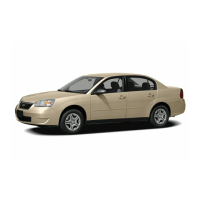

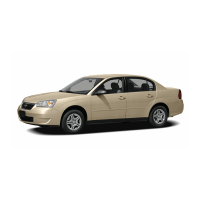
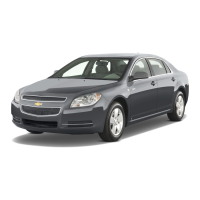


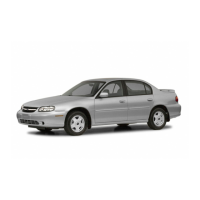
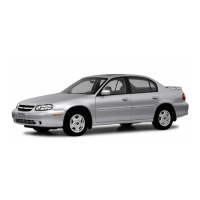
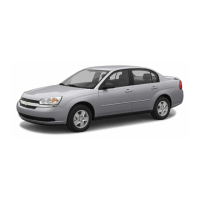
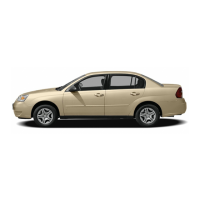
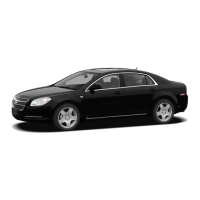

